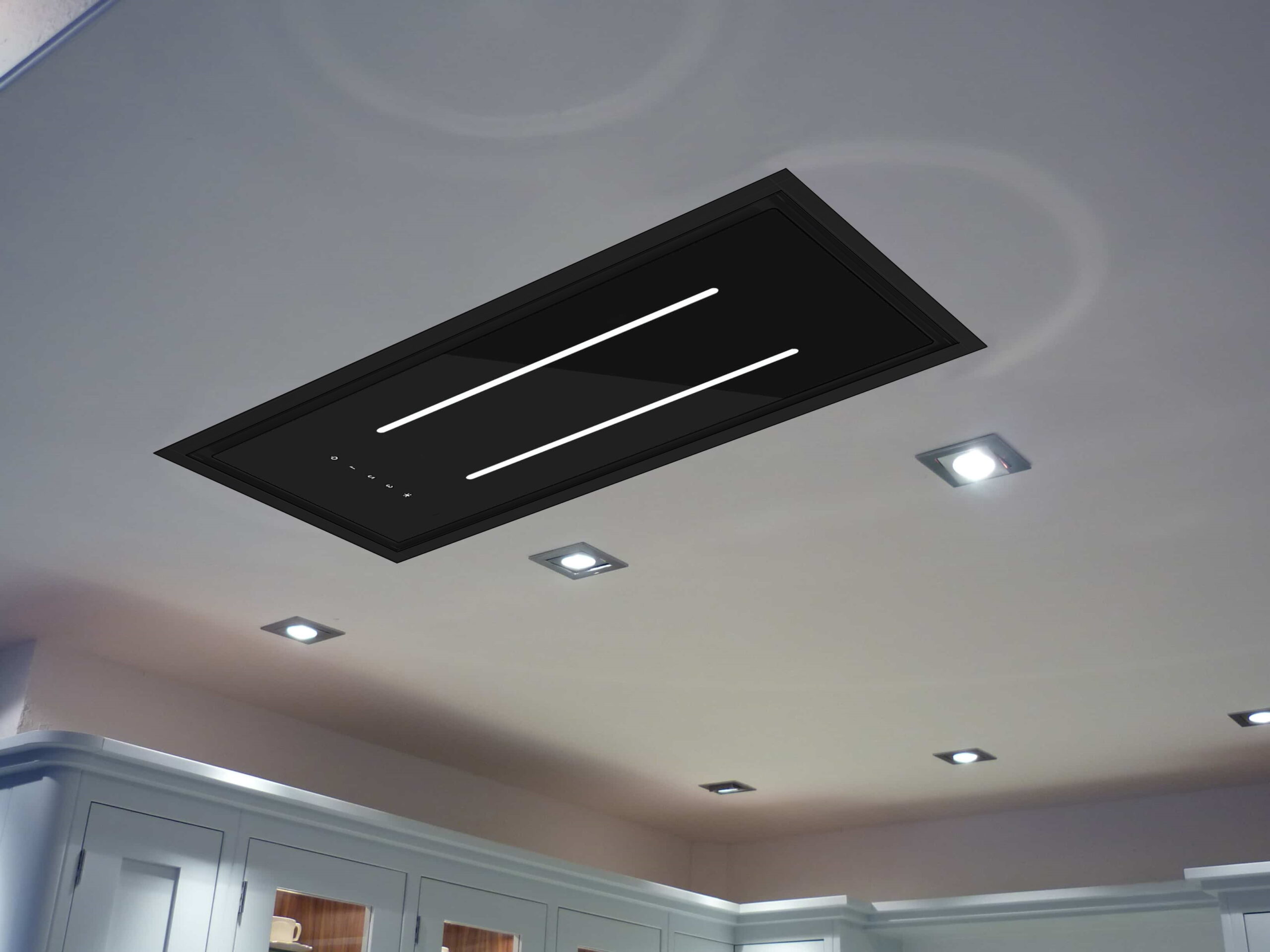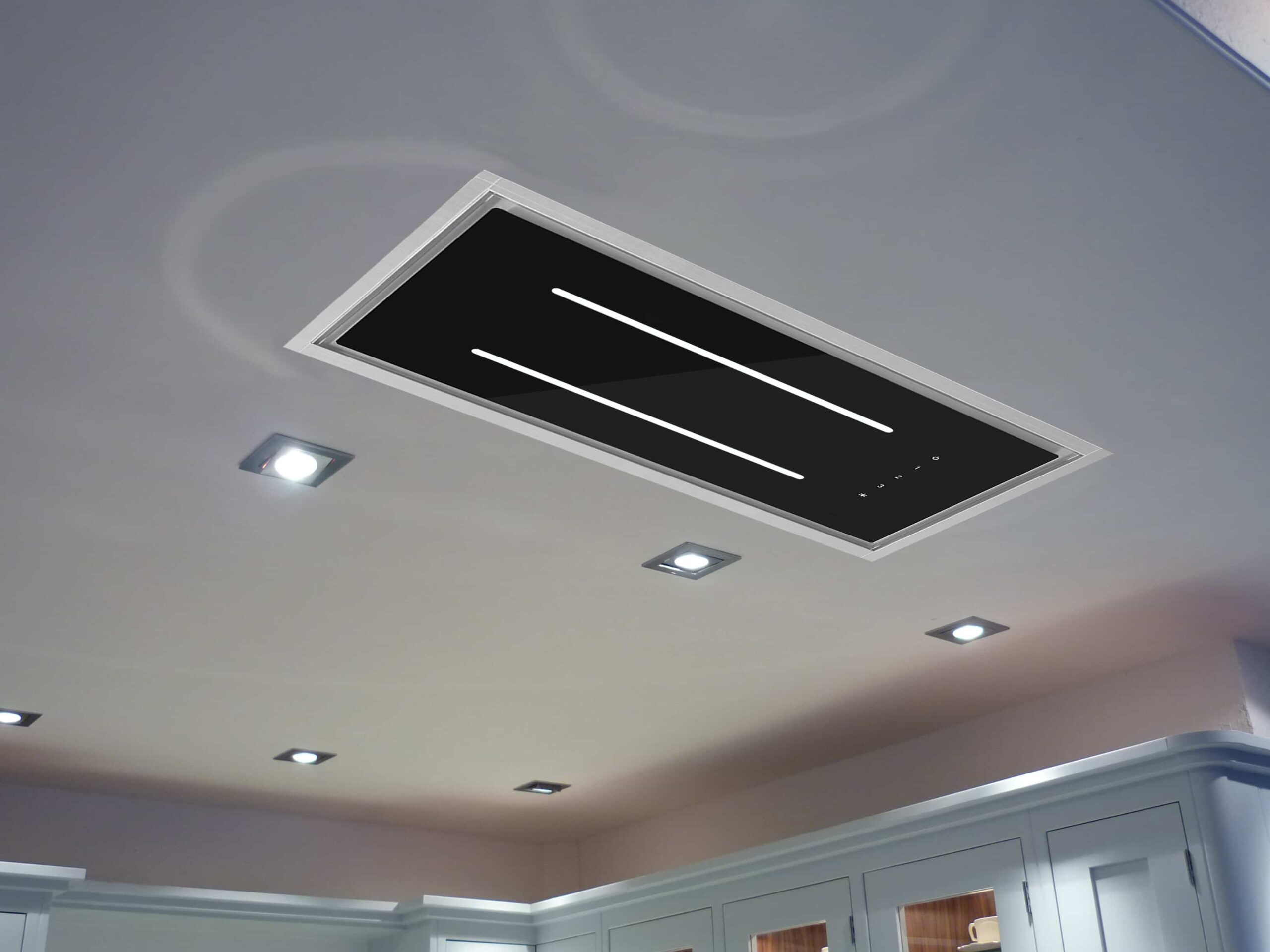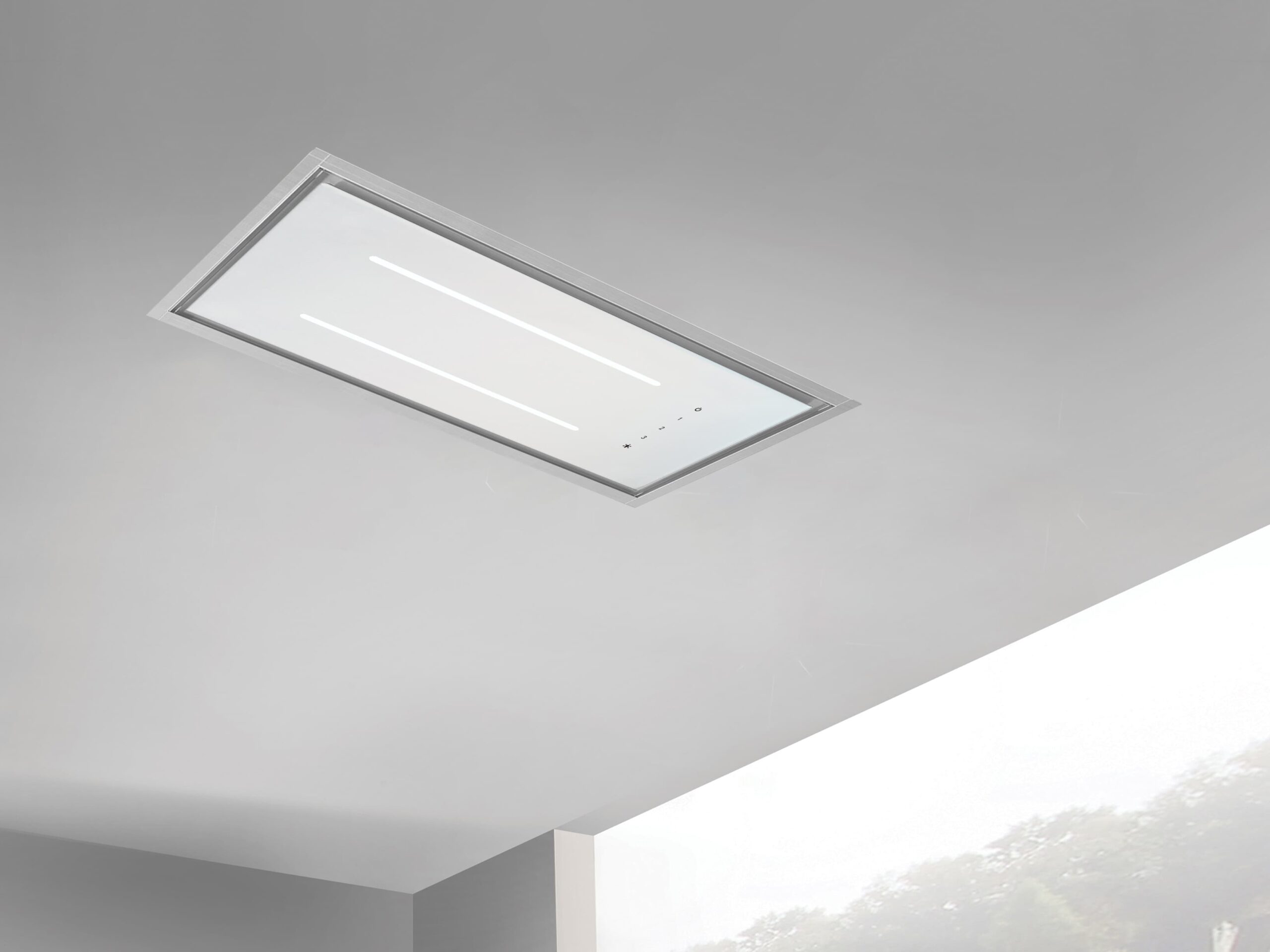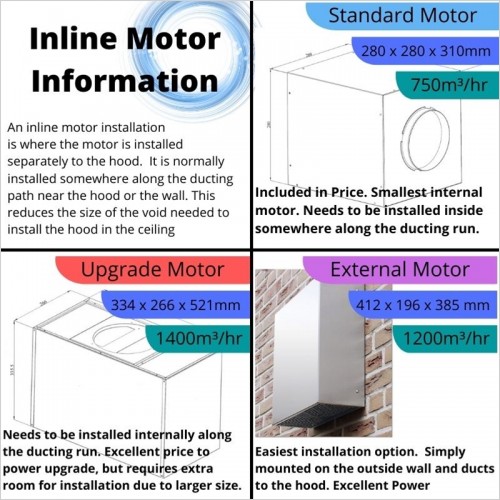No products in the basket.
Aria Ceiling Hood Fit Between Joists

Kitchen Islands are hugely popular nowadays. Gone are the days of simply having a central area for prep or casual dining; now we integrate our appliances into them to give us even more flexibility in our cooking.
Most kitchen islands now feature hobs, maybe a domino hob for baking, but mainly the main hob will be situated there.
Situating the hob on the island also means you can install a larger hob, 70cm, 80cm, or even 90cm hobs, which fit easily, but this could pose an extraction problem.






The best solution is to install a ceiling cooker hood and duct the cooking steam directly outside. (With any cooker hood, always duct outside if you can. The extra expense of installing it will be recouped in savings from replacing the filters in a few years, and the ability to extract at full efficiency makes a huge difference.) There is a growing number of ceiling hoods on the market. One of our best-selling models is the ViandPro Aria, as it is perfect for installations without creating a false ceiling.
The Aria now comes in four colours. All white, white with a stainless steel outer frame, all black and black with a stainless steel outer frame. So long as the joists run the same way as the hob, you can fit it between standard 8″ joists. Even if your joists are on the smaller side, an extra sheet of board on the ceiling would give you the required installation height of 207mm. With a 500m³/hr motor, it should be up to the job for 9/10 kitchens.

This is a superb solution where you don’t want to drop the height of the ceiling with a bulkhead or drop-down box to hide the hood. This is quite a unique feature of the ViandPro Aria ceiling hood. As long as the joists run the correct way, it’s the simplest solution.
AIRUNO Eclipse/Slimline Classic
Another great solution is the Airuno Eclipse and Slimline Classic range. As the motor rotates 90°, they can be installed across the joists and between them. If you choose the across-the-joists installation, the joists may need to be shaved slightly where the hood sits, as the centre section sits a little proud.

The Airuno Eclipse isn’t a flush-fit ceiling cooker hood; instead, only the motor sits in the joists, and the body of the hood sits on the ceiling. But the edges bevel in to create a sleek finish. It sits around 3cm proud of the ceiling.

What if I can’t fit my hood between joists? What other options are there?
If you aren’t lucky enough to fit a hood between your joists, the only option is to create a box dropped down from the ceiling to house the hood. This obviously breaks the ceiling line, so people usually wish to minimise the size needed.
Most ceiling cooker hoods are supplied with the motor attached to the top of the body of the hood. However, this actually adds height to the size of the ceiling hood. Instead, you should consider a ceiling cooker hood with an inline motor.
Ceiling hoods with Inline motors are where the body of the hood and the motor are not connected. Instead, the motor is installed along the ducting run to the outside wall. By having a separate motor, you only need to house the body of the hood in the dropdown box/bulkhead, therefore reducing the size that drops down from the ceiling.

You do have to consider where you will house the motor, but you may be lucky enough to be able to upgrade to a larger motor. The ViandPro Ceiling Hoods with Inline Motors come with a motor box about 30cm³ – but if you have space, there exists an excellent value motor upgrade which effectively doubles the hood’s power. The 1400m³/hr motor is 50 x 30 x 30cm, so it may not be suitable for every installation.
However, the most underrated option in the range is the external motor upgrade. You house the body of the hood in the bulkhead, which will be less than 200mm in height, then run 150mm ducting and the included cable to the outside wall.
The motor sits outside in its weatherproof housing, reducing noise and the size of the required boxing and fitting complexity.
